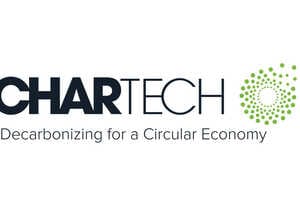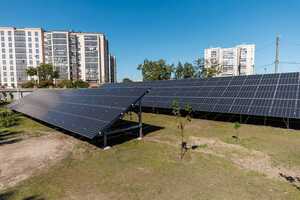6 Trailblazing CDR Companies Paving the Way to a Cleaner Sky





















As we tackle the challenge of climate change, Carbon Dioxide Removal (CDR) technologies are emerging as crucial tools in our arsenal. CDR companies specialize in developing and implementing technologies that actively remove CO2 from the atmosphere, going beyond just reducing emissions to also extract excess greenhouse gases already present in our air. These companies are essential because even with our best efforts to cut emissions, we need to remove excess CO2 already in the air to effectively combat global warming – it's like turning off the tap and also draining the overflowing bathtub. Let's dive into sixCDR frontrunners that are making waves in the industry and bringing us closer to achieving Geological Net Zero.
1. Carbon Engineering: Scrubbing the Sky Clean
Founded in 2009, Carbon Engineering has become a household name in the Direct Air Capture (DAC) space. The brand’s large-scale DAC technology is designed to remove CO2 directly from the atmosphere, offering a powerful solution for hard-to-abate emissions.
Key Features:
- Can capture up to 1 million tons of CO2 annually per facility
- Partners with 1PointFive to build commercial-scale plants
- Demonstrated its “AIR TO FUELS” process in 2017 by creating drop-in compatible, low-carbon jet fuel and diesel from atmospheric carbon.
Impact: Carbon Engineering's technology demonstrates the feasibility of large-scale atmospheric CO2 removal, paving the way for widespread adoption of DAC solutions.
2. 1PointFive: Scaling Direct Air Capture for Global Impact
A subsidiary of Occidental, 1PointFive is at the forefront of commercializing and deploying Direct Air Capture (DAC) technology at an unprecedented scale. Named after the goal to limit global temperature rise to 1.5°C, this company is turning ambitious climate targets into reality.
Key Features:
- Partnering with Carbon Engineering to build and operate DAC facilities
- Constructing STRATOS, set to be the world's largest DAC facility, in Texas
- Developing a DAC Hub concept for efficient, large-scale carbon removal
Impact: 1PointFive is bridging the gap between innovative technology and large-scale implementation, demonstrating the commercial viability of DAC and accelerating its adoption worldwide.
3. Climeworks: Modular Marvels of Carbon Capture
Swiss company Climeworks has made headlines with its modular DAC units, which can be scaled and adapted to various environments and needs.
Key Features:
- Operates Orca, the world's first commercial DAC plant in Iceland
- Combines DAC with geothermal energy for efficient operations
- Offers carbon removal as a service to individuals and businesses
Impact: Climeworks is making CDR accessible to a wider audience, fostering a sense of individual responsibility in tackling climate change.
4. Global Thermostat: Flexible Carbon Capture Solutions
Global Thermostat's innovative approach allows for carbon capture from both the atmosphere and industrial sources, offering versatility in addressing CO2 emissions.
Key Features:
- Proprietary amine-based sorbents for efficient CO2 capture
- Modular design allows for integration with existing industrial facilities
- Can operate using low-temperature waste heat, improving energy efficiency
Impact: By providing flexible solutions, Global Thermostat is helping to accelerate the adoption of carbon capture technologies across various industries.
5. Gevo North Dakota: Low-Carbon Fuels & BECCS Integration
Gevo North Dakota, recently acquiring Red Trail Energy’s assets, is bringing BECCS to the heartland. Focused on bio-based fuels, Gevo is also enabling geological CO2 storage through its CCS project, contributing directly to permanent carbon removal.
Key Features:
- Produces biofuels like E85 from corn and agricultural residues
- Developing a Carbon Capture and Storage (CCS) project at Red Trail Energy in North Dakota
- Supported by field research and partnerships, including the Energy & Environmental Research Center
Impact: Gevo North Dakota is turning agricultural byproducts into a climate solution, offering a pragmatic BECCS model rooted in energy production and carbon permanence.
6. Gaia Refinery: Dual-Capture Carbon Removal Innovation
Gaia Refinery combines Direct Air Capture with Biomass Carbon Removal (BiCRS) to create a hybrid approach that maximizes CO2 removal while minimizing energy use. The company empowers industrial partners to integrate carbon removal into their everyday operations.
Key Features:
- Patented technology blending ¼ DAC with ¾ BiCRS
- Designed to retrofit into existing bio-industrial processes
- Helps customers turn waste streams into carbon-negative assets
Impact: Gaia Refinery offers a next-generation solution that lowers the energy burden of DAC while tapping into existing industrial ecosystems—a win for business and the planet.
Conclusion
These six companies represent just a fraction of the innovative work being done in the CDR field. As we continue to develop and scale these technologies, we're not just dreaming of a cleaner sky – we're actively working towards it. The journey to Geological Net Zero is complex, but with continued innovation and commitment, it's a goal within our reach.
Remember, while these technologies are promising, they're most effective when combined with robust emissions reduction efforts. As individuals, we can support this vital work by making sustainable choices in our daily lives. Together, we can create a future where clean skies are not just a possibility, but a reality. To learn more about other emission reduction efforts and how you can contribute, visit our How to Save the Planet page.



